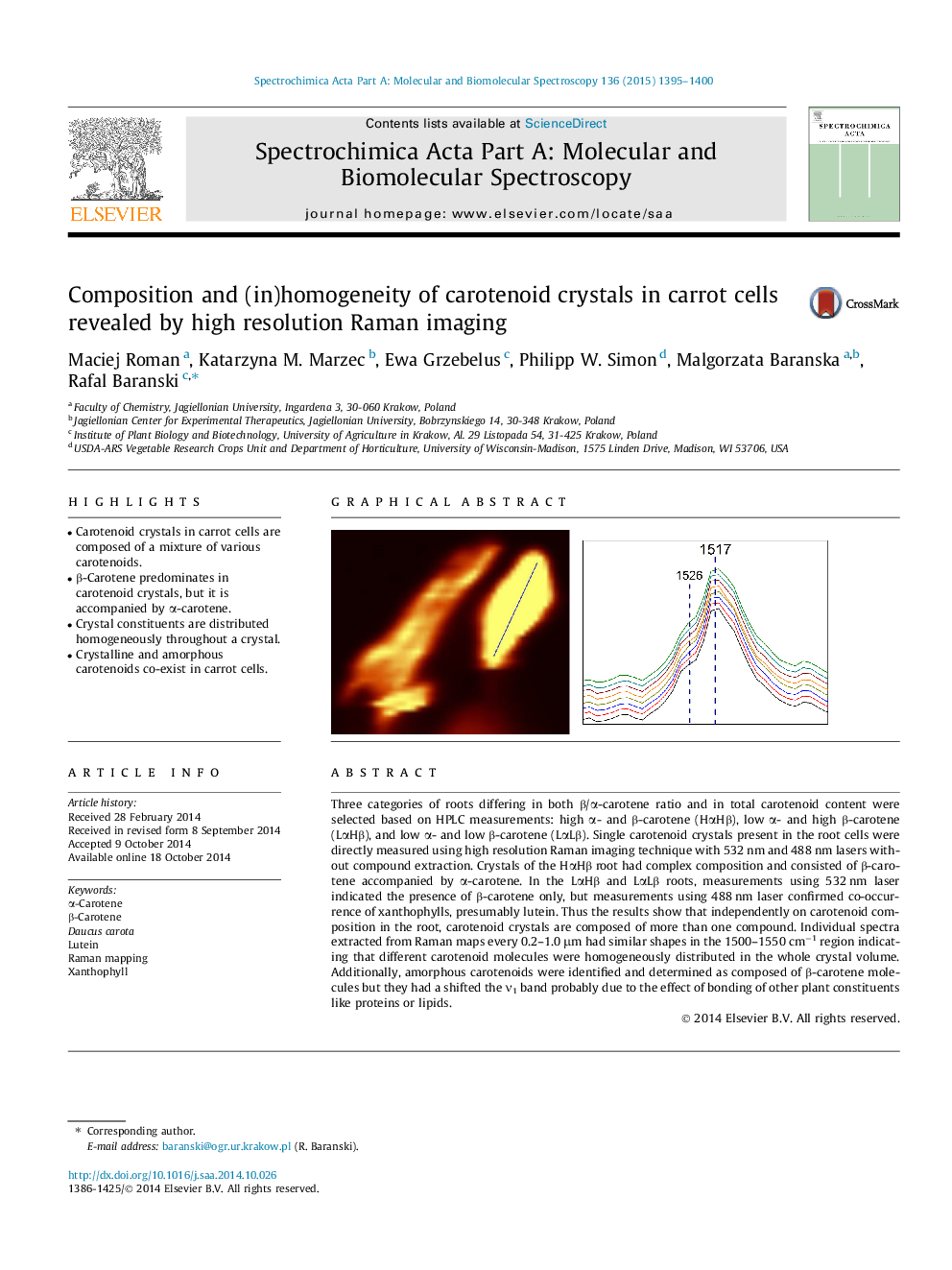| Article ID | Journal | Published Year | Pages | File Type |
|---|---|---|---|---|
| 1232448 | Spectrochimica Acta Part A: Molecular and Biomolecular Spectroscopy | 2015 | 6 Pages |
•Carotenoid crystals in carrot cells are composed of a mixture of various carotenoids.•β-Carotene predominates in carotenoid crystals, but it is accompanied by α-carotene.•Crystal constituents are distributed homogeneously throughout a crystal.•Crystalline and amorphous carotenoids co-exist in carrot cells.
Three categories of roots differing in both β/α-carotene ratio and in total carotenoid content were selected based on HPLC measurements: high α- and β-carotene (HαHβ), low α- and high β-carotene (LαHβ), and low α- and low β-carotene (LαLβ). Single carotenoid crystals present in the root cells were directly measured using high resolution Raman imaging technique with 532 nm and 488 nm lasers without compound extraction. Crystals of the HαHβ root had complex composition and consisted of β-carotene accompanied by α-carotene. In the LαHβ and LαLβ roots, measurements using 532 nm laser indicated the presence of β-carotene only, but measurements using 488 nm laser confirmed co-occurrence of xanthophylls, presumably lutein. Thus the results show that independently on carotenoid composition in the root, carotenoid crystals are composed of more than one compound. Individual spectra extracted from Raman maps every 0.2–1.0 μm had similar shapes in the 1500–1550 cm−1 region indicating that different carotenoid molecules were homogeneously distributed in the whole crystal volume. Additionally, amorphous carotenoids were identified and determined as composed of β-carotene molecules but they had a shifted the ν1 band probably due to the effect of bonding of other plant constituents like proteins or lipids.
Graphical abstractFigure optionsDownload full-size imageDownload as PowerPoint slide
